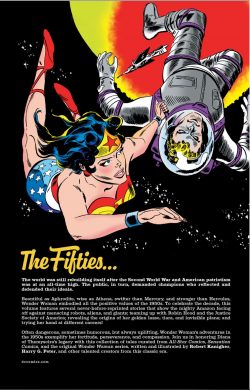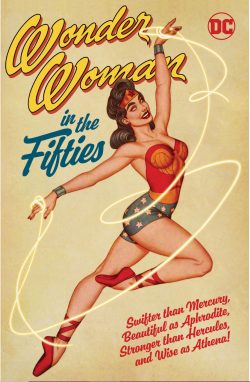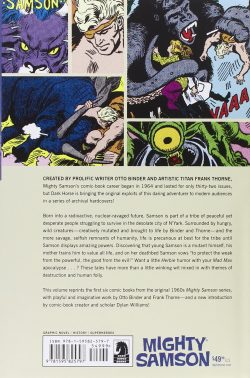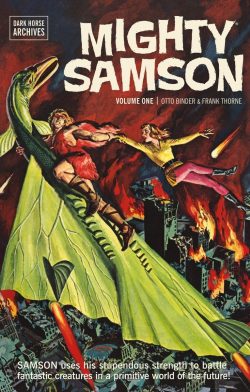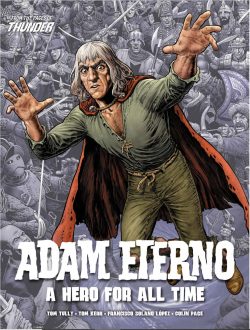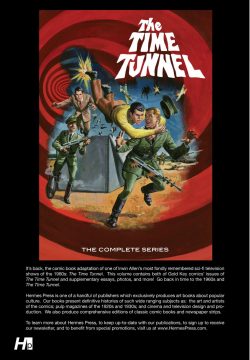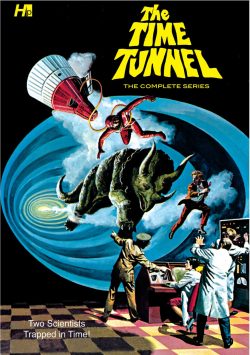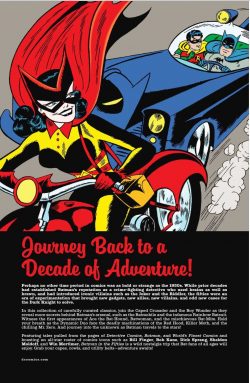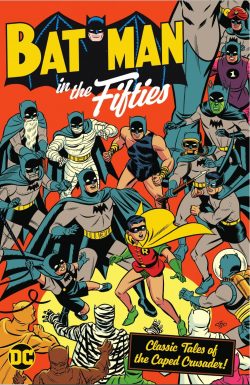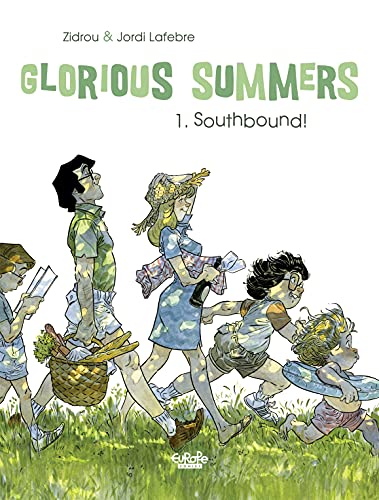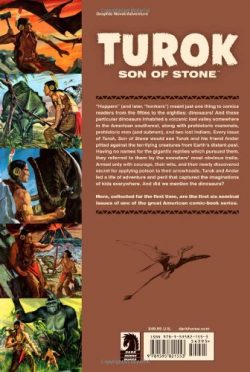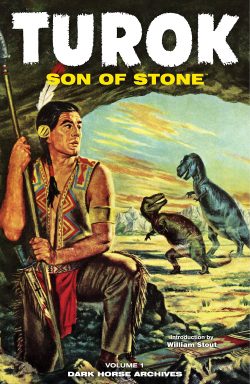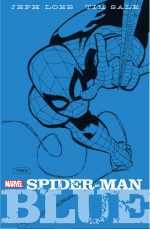
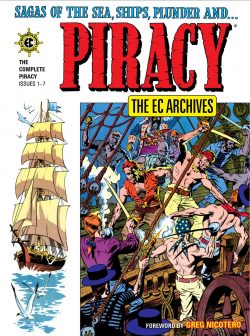
By Irv Werstein, Carl Wessler, Jack Oleck, Reed Crandall, Wally Wood, Graham Ingels, George Evans, Jack Davis, Bernie Krigstein, Al Williamson, Angelo Torres & various (Dark Horse Books)
ISBN: 978-1-50670-700-6 (HB) eISBN 978-1-50670-967-3
Haa-Haaarr! It be International Talk Like a Pirate Day and we backseat buccaneers be cunning coves ‘oo prefers to sneak up on a fellow when they most expects it, especially since precious pearls like these graphical beauties never go stale…
Legendary imprint EC Comics began in 1944 when comic book pioneer Max Gaines sold the superhero properties of his All-American Comics company to half-sister National/DC. The Inventor of Comic Books only retained Picture Stories from the Bible. His plan was to produce Educational Comics, with schools and church groups being his major target market. He latterly augmented his core title with Picture Stories from American History, Picture Stories from Science and Picture Stories from World History. Sadly, the worthy venture was already struggling when Gaines died in a boating accident in 1947.
His son William was dragged out of college and hurled into the family business where – with much support and encouragement from unsung hero Sol Cohen (who held Dad’s company together until the initially unwilling Bill abandoned his dreams of a career in chemistry) he transformed the ailing enterprise into Entertaining Comics…
After some tentative false starts and abortive experiments, Gaines and his multi-talented associate Al Feldstein settled into a bold, impressive publishing strategy, utilising the most gifted illustrators in the field to tell a “New Trend” of stories for an older and more discerning readership.
Between 1950 and 1954, EC was the most innovative, influential comics publisher in America, dominating the newly reinvigorated genres of crime, horror, war and science fiction. Moreover, under the auspices of writer, artist and editor Harvey Kurtzman, the company introduced an entirely new beast: the satirical comic book…
Kurtzman was hired to supplement the workforce on EC’s horror titles but wasn’t a fan of that genre, suggesting instead a new action-adventure title. The result was Two-Fisted Tales which began with #18 as an anthology of rip-snorting, stand-alone he-man dramas. With America deep into a military “police action” in Korea, the title quickly became a dedicated war comic, rapidly augmented by a second, Frontline Combat.
Also written and edited by Kurtzman, who assiduously laid-out and meticulously designed every story, it made for great entertainment and a unifying authorial voice but was frequently a cause of friction with his many artists. In keeping with the spirit of Gaines’ “New Trend”, these war stories were never bombastic, jingoistic fantasies for glory-hungry little boys, but rather subtly subversive examinations of the cost of conflict which highlighted the madness, futility and senseless, pointless waste of it all…
When the McCarthy-era anti-comics witch hunt of the 1950s crushed the industry and gutted EC’s output by effectively outlawing horror, crime, gore, political commentary and social criticism, Gaines & Feldstein retrenched: releasing experimental titles under the umbrella of a “New Direction”.
Kurtzman’s Mad – which had defined a whole new genre, bequeathing unto Americans Popular Satire – was reconfigured into a monochrome magazine, safely distancing the outrageously brilliant comedic publication from the fall-out caused by the socio-political witch-hunt which eventually killed EC’s other titles…
Denied a soapbox to address social ills, Gaines’ new books concentrated on intrigue, adventure and drama, informed by fresh modern fascinations: either intellectual or mass entertainment fads. Despite still featuring stunningly beautiful artwork and thoughtful writing, New Direction titles couldn’t find an audience and died within a year.
Impact, Extra!, Aces High and Valor all reflected themes of contemporary film and TV, whilst Psychoanalysis and M.D. targeted mature audiences through the growing TV phenomenon of medical drama. Incredible Science Fiction bridged the transition from old vogue to new line-up whilst also tapping movie trends. Another fad paying off big on screen had already been seen in previous Kurtzman’s adventure titles… sea-going sagas from different points in history…
Piracy set sail in the Fall of 1954 (#1 was cover dated October/November) and ran for seven bi-monthly issues before being scuttled at the end of 1955. This volume of Dark Horse’s EC Archives gathers them all, re-presenting some of the most gorgeous art of the era – or ever – but with scripts apparently curtailed by the newly-instituted Comics Code Authority and Gaines’ own sense of financial survival.
And yes, Watchmen fans, these are the stories Alan Moore & Dave Gibbons were referencing in that sub-strand of their dystopian masterpiece…
One last thing to remember: although it’s called Piracy, the series embraced all aspects of nautical fiction, from wars, whaling and the slave trade right up to contemporary commercial affairs: mixing flamboyant sea sagas with deeper, more complex and even socially crusading maritime topics intended to equate with literary highlights like CM Forester’s Hornblower yarns, Herman Melville’s classic text and even more modern fare by Jack London or Ernest Hemingway.
Before getting underway, the fraught history of the company is outlined in Grant Geissman’s informative Introduction, offering keen insights into those times and the gifted creators involved, after which Film Producer Greg Nicotero’s Foreword provides insight into Bill Gaines’ pioneering stand against censorship…
Sadly, despite diligent efforts by researchers and historians, many of these tales still have no writing credit, but that barely affects their power to enthral as we open with a stunning Wally Wood cover. Piracy #1 opens with editorial welcome ‘Scuttlebutt’ before Reed Crandall and an author unknown detail the rise and fall of ‘The Privateer’ with patriotic Englishman Captain Ballard James gradually succumbing to temptation. Originally and exclusively targeting Spanish vessels, his battles eventually turn to personal profit not his country’s survival before he suffers a grisly, ironic comeuppance…
This collection also includes rousing house ads by EC’s finest and a particularly stirring one from Wood precedes his tale ‘The Mutineers’, with murderous marine martinet Cap’n Mathew Bollard finally driving his long-suffering crew into desperate retaliation and desertion during the last voyage of the clipper Lorna J in 1854…
Al Williamson & Angelo Torres formed a sublime artistic partnership at EC and their captivating versality is displayed in ‘Harpooned’. Also set in 1854 (for which thank the ever-beguiling concept of “only 100 years ago…”), it details how whaling bark Eben Dodge was lost due to the growing tensions between the envious first mate and a dedicated captain who assumed his only foe was the giant sea beasts they hunted together…
Prose parable ‘The Challenge’ (regarding a sea captain with an obsessive grudge against storms) and a Jack Davis-limned ad lead to the master cartoonist’s first full contribution, as ‘Shanghaied’ shares a long-anticipated reunion between a lifelong mariner and the criminal procurer who drugged and sold him into sea service a dozen years previously…
Cover-dated December 1954/January 1955, Piracy #2 opens with a Crandall cover and lead story ‘Sea Food’, wherein pirate Benjamin Medford’s ruthless predations are ended by cruel misfortune, British Naval firepower and brutal, bestial karma. Davis then returns to explore the eastern concept of ‘Kismet’ after a slave-ship’s first mate betrays his skipper and learns a lasting lesson about duty and honour…
‘Loblolly Boy’ is an historical text feature concerning tricks played on first-timers and junior seamen, after which Williamson & Torres render a modern tale of penny-pinching, deep sea treasure hunters in ‘The Shell Game’, backed up by prose piece ‘The Dive’ about a trainee’s last dry run…
The issue closes with Wood’s ‘A Fitting End’, scripted by Carl Wessler and detailing how Edmund Drummond, Master of His Majesty’s Ship Sea Gull, allows his own innate cruelty and sense of superiority to provoke shipboard unrest even as his subordinate Jack Roark discovers an unsuspected piratical family connection…
Crandall retains the cover and lead position for #3 with a compelling tale of the buccaneer who sought higher status and position than mighty ‘Blackbeard’, before ‘Scuttlebutt’ returns in the form of a letters page.
Wessler & Bernie Krigstein (one of comics’ most innovative illustrators and a commercial and gallery artist) then unite for a psychological war drama in the style of Frontline Combat as ‘U-Boat’ reveals the lethal outcome of a battle of wills between a German submarine commander and his fanatical Nazi political officer. Text tale ‘The Beast’ exposes romantic rivalry between tuna fishermen, preceding George Evans’ debut in ‘Mouse Trap’ as a 19th century sailor plucked from the seas expiates his guilt and shares his role in the ghastly fate of lost ship The Sea Spray…
Wessler & Graham Ingels then close the issue with the saga of an abolitionist white man shanghaied to serve aboard a ‘Slave Ship’ and the pact he made with its “human cargo”…
Behind Piracy #4’s Crandall cover and more ‘Scuttlebutt’ letters, that dean of realism rendered the brutal tale of Cap’n Satan – Terror of the Spanish Main. This savage, satirical yarn of the ‘Pirate Master’ details his humble origins, appalling deeds and ultimate downfall …matrimony!
‘The King’s Buccaneer’ recounts in prose the career of privateer Sir Henry Morgan, after which Wessler & Evans use the war of 1812 to frame the salutary saga of a stubborn young American midshipman who wants everything done ‘By the Book’, no matter how impractical… or suicidal…
A brace of house-ads for the entire New Direction Line segues into Ingels illustrated mystery ‘The Sheba’ with a young sea captain taking to the bitter end his vendetta against a sailing ship he believes wants to kill him. Krigstein then realises revolutionary France for us as aristocratic rival siblings in the King’s navy ruthlessly vie for prominence and position until the events of 1789 engulf them both with lethal results in ‘Inheritance’…
Krigstein’s cover for #5 (June/July 1955) precedes Crandall’s gorgeous re-examination of US patriotic icon ‘Jean Lafitte’, before another missives-packed ‘Scuttlebutt’ leads to Wessler & Ingels’ ‘Rag Doll’, wherein a sullen brute on an 1810 four-master repels a pirate raid almost singlehandedly, simply to reclaim the childhood totem hiding his darkest secret and greatest shame…
Jack Oleck scripts Krigstein on ‘Salvage’ as ruthless seaborne profiteers learn a nasty lesson about humanity, after which snippets of sea-based new stories are recycled in prose piece ‘Breakers on the Shore’, prior to Evans closing the issue with ‘The Keg’: a sinister yet uplifting saga of survival…
Krigstein’s stunning cover for penultimate issue #6 segues into Crandall’s chilling 17th century-set saga of plunder, murder and brain-shattering guilt as a drunken derelict details how he is cursed by treasures ‘Fit for a King’. Scuttlebutt letters lead to Wessler & Evans’ account of a junior officer deranged by denial of promotion and what he does to become ‘The Skipper’ before Ingels limns the story of a merciless seal trapper who destroys an arctic village’s food supply and is driven ‘Fur Crazy’…
Sir Francis Drake’s prose biography ‘Sailor for Queen Bess’ precedes Davis’ tale of South Pacific schooner master Jonathan Wade whose favourite disciplinary tactic is casting men adrift in an open boat. His inevitable breakdown leads to justice when he too is lost in ‘Solitary’…
Evans drafted the iconic last cover and Crandall told his final tale here as warring corsair captains Kemp and Valdez became ‘Partners’ in piracy just long enough to get really, truly rich… before inevitably betraying each other.
Text tale ‘Prologue’ follows a trainee submariner’s last test exercise before Wessler & Krigstein visit 1777’s New England, where a British fleet determined to take Saratoga is lured to destruction ‘Up the River’ by a terrain-savvy farmer.
Incessantly harassed by his literal fishwife spouse, a weary, poverty-stricken fishing boat skipper does a selfless good deed and is blessed with ‘John’s Reward’ in a wry, domestic drama drawn by Ingels, after which more postal praise in ‘Scuttlebutt’ leads to one final foray from Evans as ‘Temptation’ finds venerable Captain Dover and his young chief officer aboard a Charleston packet boat. Of course, a once-in-lifetime cargo of $2 million in gold and jewels would turn most heads and suspicion quickly leads to a bad life choice…
Every page here has been restored from the masterful colour guides of original colourist Marie Severin, resulting – with modern reproduction techniques – in a sequence of graphic poems of unsurpassed beauty, whilst original house ads and commercial pages from the period tantalise in a way no others could, completing a nostalgic experience unlike any other.
The New Direction was a last hurrah for the kind of literate, mature comics Gaines wanted to publish. When they failed, he concentrated on Mad magazine and satire’s gain was American comics’ loss. Now you can vicariously relive those times and trends, and I strongly suggest that whether you are an aged EC Fan-Addict or nervous newbie, this is a book no aficionado can afford to miss. Why not dig deep and secure these timeless treasures, Me Hearties?
THE EC ARCHIVES: PIRACY® & © 1954, 1955, 2019 William M. Gaines Agent, Inc. All rights reserved. Introduction © 2019 Grant Geissman.

